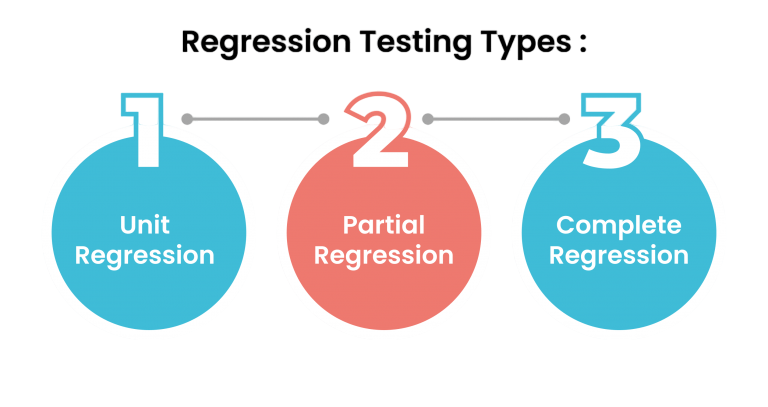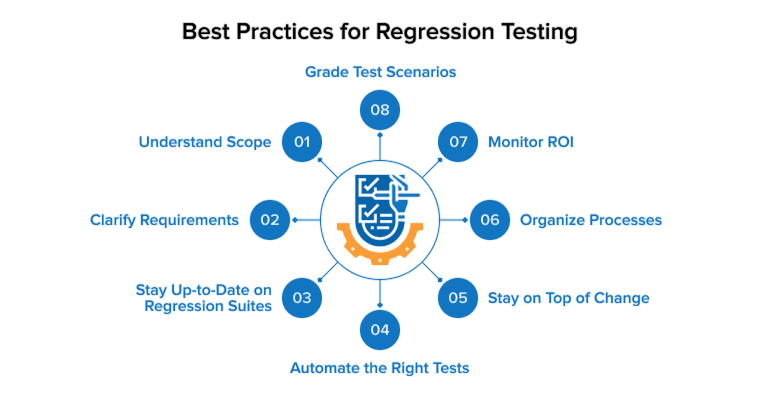
- Introduction to Regression Testing
- Importance of Regression Testing in Software Development
- Types of Regression Testing
- When to Perform Regression Testing
- Techniques and Approaches to Regression Testing
- Tools for Regression Testing
- Challenges in Regression Testing and How to Overcome Them
- Best Practices for Effective Regression Testing
- Conclusion
Introduction to Regression Testing
In the fast-paced world of regression test software development, delivering high-quality products while frequently updating them is crucial. Regression testing is an essential part of the software testing lifecycle aimed at verifying that recent code changes have not adversely affected existing functionalities. When developers make changes whether to add new features, fix bugs, or improve performance, there’s always a risk that these changes may unintentionally break parts of the application that were previously working correctly. Regression test software development helps to catch such issues early, ensuring that the software remains reliable and stable after every modification. At its core, regression testing involves re-running a subset of test cases that have already been executed to confirm that the application’s existing behavior remains unchanged.
Are You Interested in Learning More About Software Testing? Sign Up For Our Software Testing Certification Training Today!
Importance of Regression Testing in Software Development
Regression testing is crucial for maintaining software stability. Without it, every code change risks introducing new defects into previously tested and working code, potentially leading to system failures or degraded user experience. Modern development methodologies like Agile, DevOps, and Continuous Integration/Continuous Deployment (CI/CD) rely heavily on regression testing. Since these approaches involve frequent code changes and rapid releases, regression testing provides confidence that updates don’t break existing functionality. Although regression testing requires resources upfront, it saves time and cost in the long run by detecting defects early. Fixing bugs in production can be expensive and damaging to a company’s reputation. Regression testing helps maintain high product quality by ensuring that features continue to work as expected over successive releases.
Types of Regression Testing
Types of Regression Testing isn’t a one-size-fits-all approach; it encompasses several types based on context and needs:
- Corrective Regression Testing: Performed when no changes have been made to the existing software, but tests are rerun to ensure the software remains stable.
- Retest-all Regression Testing: All tests in the test suite are executed again. This is comprehensive but time-consuming and usually applied when major changes occur.
- Selective Regression Testing: Only a subset of test cases related to the changed parts of the software are executed, reducing time and resources.
- Progressive Regression Testing: Used when changes are made to software specifications or functionalities. It involves testing new test cases along with existing ones to ensure changes don’t affect the software adversely.
- Partial Regression Testing: Focuses on testing a part of the system that is affected by code changes.
- Complete Regression Testing: Applied when the software undergoes significant changes, requiring thorough retesting of the entire system.
- After Bug Fixes: To ensure the fix doesn’t cause new issues.
- After Adding New Features: To verify new functionality doesn’t break existing features.
- During Integration: When different modules are integrated, regression testing confirms that integration didn’t affect existing functionality.
- Before Releases: To ensure the software is stable and ready for deployment.
- After Performance Enhancements: To validate performance tweaks didn’t alter functionality.
- During Maintenance: Continuous testing during the maintenance phase helps prevent software decay.
- High Time and Resource Consumption: Running all regression tests frequently can be time-consuming. Solution: Implement test case prioritization and automation to focus on critical areas and reduce manual effort.
- Maintaining Test Scripts: Automation scripts may break due to frequent changes. Solution: Regularly update and maintain test scripts and use tools that offer robust object recognition.
- Identifying Impacted Areas: It can be difficult to pinpoint which parts of the software are affected by changes. Solution: Use impact analysis techniques and code coverage tools to focus testing efforts.
- Managing Test Data: Test data must be relevant and consistent. Solution: Create and manage reusable test data sets and automate data provisioning.
- Balancing Depth and Speed: Comprehensive testing versus quick feedback is a trade-off. Solution: Use a combination of smoke testing and selective regression testing to balance speed and coverage.
- Automate Where Possible: Automate repetitive test cases to save time.
- Maintain Test Suites Regularly: Remove obsolete test cases and add new ones.
- Prioritize Test Cases: Focus on critical and frequently used functionalities.
- Integrate with CI/CD Pipelines: Automated regression tests should run on every code commit.
- Use Impact Analysis: Identify which parts of the software are impacted and target those areas.
- Keep Test Data Ready: Maintain reliable and reusable test data sets.
- Involve Developers and Testers: Collaboration improves test coverage and quality.
- Monitor and Analyze Test Results: Use analytics to improve future testing efforts.

To Explore Software Testing in Depth, Check Out Our Comprehensive Software Testing Training Course To Gain Insights From Our Experts!
When to Perform Regression Testing
Regression testing should be carried out in various situations, including but not limited to:
Techniques and Approaches to Regression Testing
Organizations have a few different strategies they can use for regression testing to make sure their software is solid and reliable. Manual regression testing involves testers going through test cases one by one, checking the results carefully. This can be really helpful for smaller projects or when automating isn’t really an option, though it can eat up a lot of resources. On the other hand, automated regression testing uses special tools to run pre-set test scripts automatically. This is much more efficient for big projects that get updated often and is key for building strong continuous integration/continuous deployment (CI/CD) pipelines. To get the most out of their testing, teams often prioritize their test cases. They figure out which tests are most critical or most likely to catch a problem and tackle those first, making sure they’re using their resources wisely. They also pick and choose specific tests that are relevant to the parts of the software that have been changed. This helps cut down on testing time without losing important coverage. In the end, many successful teams find a middle ground, mixing manual and automated testing methods. This balanced approach lets them use the best parts of each technique to get the best results and make sure the software quality is top-notch, no matter what the project needs
Want to Pursue a Software Testing Master’s Degree? Enroll For Software Testing Master Program Course Today!
Tools for Regression Testing
| Tool Name | Description | Best For |
|---|---|---|
| Selenium | Open-source tool for web application testing | Automated UI regression tests |
| JUnit/TestNG | Frameworks for Java-based unit testing | Automated unit regression tests |
| QTP/UFT | Commercial tool for functional and regression testing | Automated regression for enterprise apps |
| SoapUI | API testing tool | Regression testing of APIs |
| Ranorex | GUI test automation tool | Desktop, web, and mobile apps |
| TestComplete | Functional automated testing tool | Regression and functional testing |
| Cucumber | Supports BDD with automation | Behavior-driven regression tests |
Challenges in Regression Testing and How to Overcome Them
Regression testing faces several challenges, each requiring strategic solutions:
Best Practices for Effective Regression Testing
Effective regression testing practices help ensure software stability and quality:

Conclusion
Regression testing is a foundational component in ensuring software quality and stability through continuous change. Whether you’re a small startup or a large enterprise, investing in a robust regression testing strategy helps detect defects early, reduce costs, and maintain user satisfaction. By understanding its importance, choosing the right types, leveraging modern tools, and following best practices, teams can effectively manage regression test software development and support rapid, reliable software delivery. Overall, the goal of regression testing is simple: keep the software working well as it grows and changes. It takes discipline, planning, and the right tools to do it right. When carried out properly, regression test software development helps teams deliver software that users trust and enjoy. It minimizes unexpected bugs, reduces costly fixes, and supports continuous delivery of reliable updates. For any organization committed to quality, regression testing isn’t just a nice-to-have it’s an essential part of their workflow.




